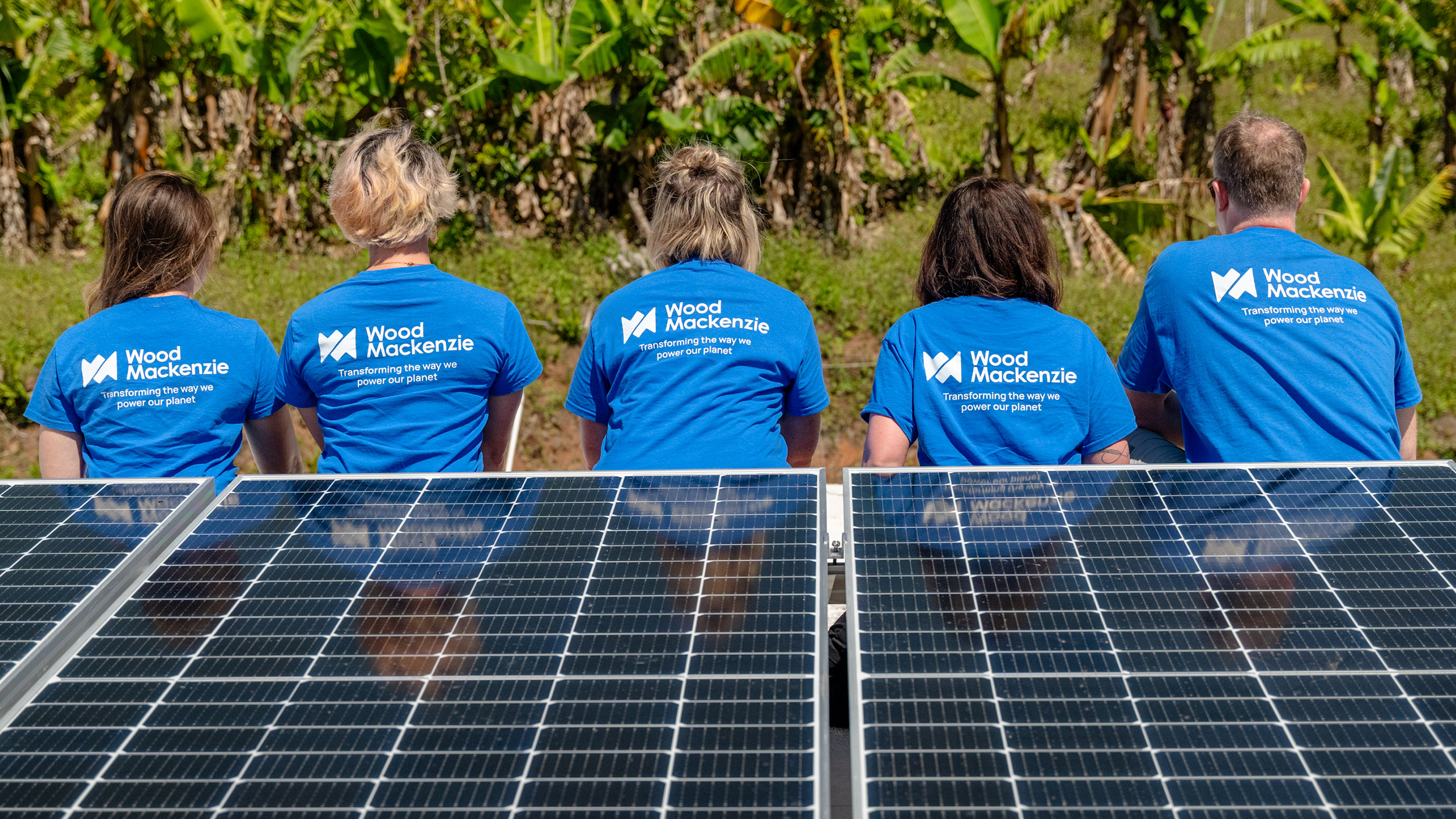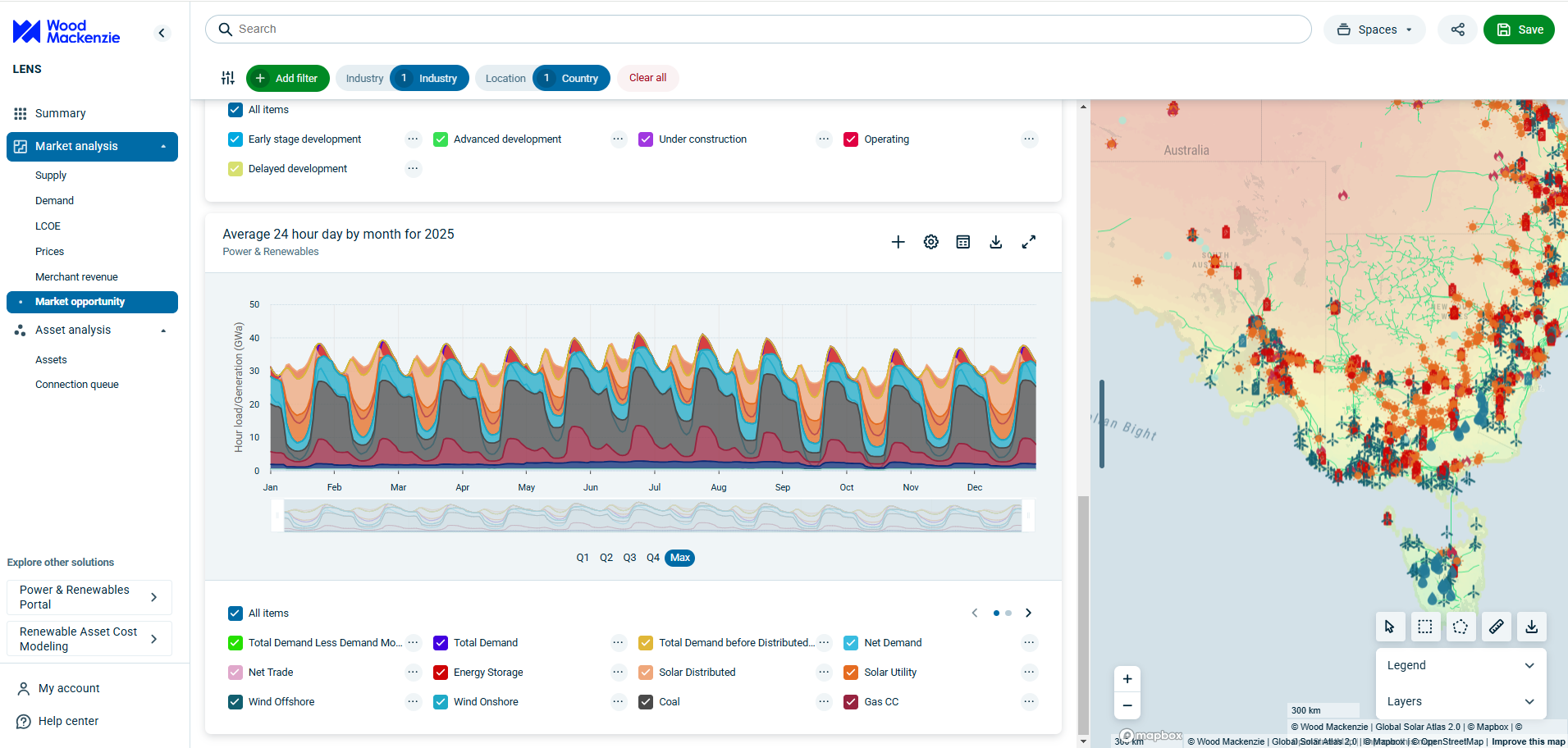Get in touch
-
Mark Thomtonmark.thomton@woodmac.com
+1 630 881 6885 -
Hla Myat Monhla.myatmon@woodmac.com
+65 8533 8860 -
Chris Bobachris.boba@woodmac.com
+44 7408 841129 -
Angélica Juárezangelica.juarez@woodmac.com
+5256 4171 1980 -
BIG PartnershipWoodMac@BigPartnership.co.uk
UK-based PR agency
US solar supply chain faces critical crossroads as tariffs and FEOC restrictions threaten domestic manufacturing crisis
Chinese dominance persists through regional subsidiaries despite diversification efforts
4 minute read
The US solar industry faces an increasingly complex web of tariffs and policy restrictions that are fundamentally reshaping global supply chains. New anti-dumping and countervailing duties (AD/CVD) on Southeast Asian cells and modules, ranging from 41.08% for Malaysia to 660.04% for Cambodia, and the threat of several new tariffs are likely to create genuine supply bottlenecks and unprecedented challenges for renewable energy deployment.
Wood Mackenzie's latest analysis reveals how these tariffs and policy shifts are reshaping the US solar supply chain. The AD/CVD investigation finalised in June on Cambodia, Malaysia, Thailand and Vietnam have pushed tariff rates on these countries above Chinese levels. This month, Commerce launched a Section 232 investigation on polysilicon imports and a group of domestic manufacturers filed an AD/CVD petition against solar cell imports from India, Indonesia, and Laos. These are forcing manufacturers into another round of geographic repositioning.
Chinese Control Persists Despite Diversification: Years of diversification efforts have failed to shield US manufacturers from escalating trade tensions. Tariffs costing billions are forcing companies to source components outside China. Malaysian glass suppliers and Vietnamese frame manufacturers may carry Southeast Asian labels, but they often operate from Chinese-owned factories. Many components still originate from Chinese-owned companies. This reality means domestic manufacturing is failing to achieve genuine supply chain independence.
"The solar industry's supply chain shuffle reveals a fundamental paradox," said Elissa Pierce, research analyst, solar module technology and markets at Wood Mackenzie. "Despite billions in tariffs and years of diversification efforts, Chinese companies still control manufacturing through regional subsidiaries. When Malaysian glass suppliers and Vietnamese frame manufacturers are Chinese-owned operations, we're not achieving energy security. We're simply paying higher prices for the same supply chain risk. These new market distortions could ultimately harm renewable energy deployment while potentially precluding domestic manufacturers from receiving the 45X tax credits due to the FEOC restrictions."
Polysilicon Chokepoint Threatens Entire Industry: Section 232 tariffs on polysilicon could present the industry's biggest supply chain challenge. China controls 95% of global solar-grade polysilicon capacity. Alternative sources are limited to small facilities in Germany, Malaysia and South Korea. The closure of REC Silicon's Moses Lake facility in early 2025 eliminated the US's only dedicated solar-grade polysilicon production.
"The Section 232 investigation on polysilicon represents the industry's biggest supply vulnerability," adds Pierce. "With China controlling 95% of global capacity and alternative sources limited to small facilities across a handful of countries, tariffs on this single component could choke the entire US solar market. Unlike module factories built in months, polysilicon facilities require years to develop. This is time the industry may not have as trade tensions escalate, and inventory buffers rapidly deplete."
Supply Chain Shuffle Creates New Vulnerabilities: The AD/CVD on Cambodia, Malaysia, Thailand, and Vietnam have caused module prices from Southeast Asia to increase 12% year-on-year, spurring rapid supply chain diversification to Indonesia and Laos. Cell and module imports from these countries surged to 0.9 GW and 2.3 GW respectively in Q1 2025, with their combined market share growing from 2% to 35% for modules and 18% for cells compared to Q1 2024.
This has spurred a group of domestic solar manufacturers to file a new AD/CVD petition against imports of solar cells (whether or not assembled into panels) from these countries and India. Operating cell manufacturing capacity outside of these regions is severely limited, so it is likely that much of the cell and module supply to the US will eventually be subject to AD/CVD tariffs. This would create upward pressure on pricing.
Domestic Manufacturing Faces Critical Juncture: The One Big Beautiful Bill Act’s restrictions on foreign entities of concern could impact up to 23 GW of operating module capacity. This could force manufacturers to restructure ownership or abandon facilities entirely. The 45X manufacturing tax credit potentially offers a critical lifeline for domestic producers. Without these credits, US manufacturers' margins would be eliminated entirely, making domestic production unviable unless prices are increased.
Inventory Buffer Provides Temporary Relief: Record imports in 2023 and 2024 created sufficient inventory to sustain US demand through 2025. However, this buffer is depleting rapidly. Monthly imports have fallen from an average of 5.3 GW to just 2.4 GW since Q4 2024 as suppliers adjust to tariffs.
MENA Region Emerges as Alternative: The Middle East and North Africa regions represent the most promising alternative supply sources. They offer lower reciprocal tariff rates of 10% compared to 26-48% for Indonesia, India and Laos. However, most MENA capacity will not come online until 2026 or later. This creates potential supply constraints if current inventory buffers are depleted before alternative sources become available. Furthermore, due to nearly all capacity in this region being Chinese-owned, developers who plan to claim the 48E/45Y ITC/PTC will need to ensure they can still meet the FEOC requirements if they use these modules.
The current trajectory suggests that without careful calibration of trade policies and industrial support, the US risks creating supply shortages that could slow renewable energy deployment at a critical time for climate goals.





